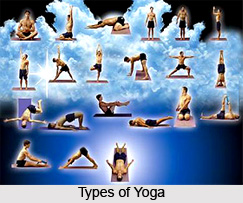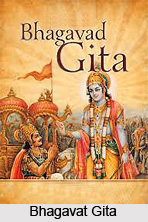 Vibhuti Pada is the significant third chapter of Patanjali Yoga Sutra. This chapter speaks of the properties of yoga and the art of integration (Samyama) through concentration, meditation and profound absorption.
Vibhuti Pada is the significant third chapter of Patanjali Yoga Sutra. This chapter speaks of the properties of yoga and the art of integration (Samyama) through concentration, meditation and profound absorption.In Vibhuti Pada, the central theme of the Yoga Sutras is to realise the concept of samadhi. The notion is that samadhi appears when the sadhakas are able to let loose their mental machinations, samskaras (past psychic imprints), klesha (afflictive emotions), karma (programming), vasana (habitual tendencies), and similar customary impositions of conditioning and conditioned belief systems that support the citta-vrtti. It begins with the concept of dharana (concentration), which is the sixth limb of Ashtanga Yoga. Dharana, dhyana (the seventh limb), and samadhi (the eighth limb) if merged together, compose Samyama that is the dominant theme of Vibhuti Pada.
Vibhuti Pada does not reveal a false or artificial state of reality, but it reveals the true natural unadulterated state of the Yogi - devoid of artifice, falsehood, ignorance, and fantasy. In Vibhuti Pada, Patanjali first shows the sadhaka the significance of integrating the intelligence, ego and 'I' principle. Further, Vibhuti Pada guides the Yogi in the subtle disciplines like concentration (dharana), meditation (dhyana) and total absorption (Samadhi). With their help, the intelligence, ego and 'I' principle are eventually sublimated. This may lead either to the liberation of various supernatural powers or to Self- Realization. Vibhuti Pada states that if concentration is maintained steadily, it flows into meditation.
Gradually, in this Pada, Patanjali guides the refined sadhaka in tracing the movements, order and sequence of each action and thought that arises, by retracing his steps through yogic discipline. The sadhaka coordinates his thoughts and actions so that there is no interval of time between them. He should reach a stage where there is absolute synchronicity of thought and action and the yogi is freed from the material limitations of time and space. This very condition generates extraordinary powers in the sadhaka. Patanjali describes these powers as the properties of yoga in the Vibhuti Pada. There are around 34 properties mentioned in this Pada.
 Moment is subjective and movement is objective in Vibhuti Pada. Patanjali explains that the moment is the present and the present is the everlasting 'now'; it is timeless and real. When the moment slips from attention it becomes movement and thus, movement is time. As moment rolls into movement the past and the future appears; while the moment disappears. Therefore it is important for the sadhaka to understand the significance of moment and movement in Vibhuti Pada to obtain true knowledge and intelligence. Exalted intelligence is pure and true, fresh and uncontaminated. It distinguishes, clearly and instantaneously, the difference between similar entities without analysing them according to the rank, creed, quality and place. The sadhaka's intelligence and consciousness now rise to the higher level of the soul. All parts of the seer appear as the soul. This is kaivalya that comes when the powers, which attract the misguided, but distract the yogi's consciousness, are renounced.
Moment is subjective and movement is objective in Vibhuti Pada. Patanjali explains that the moment is the present and the present is the everlasting 'now'; it is timeless and real. When the moment slips from attention it becomes movement and thus, movement is time. As moment rolls into movement the past and the future appears; while the moment disappears. Therefore it is important for the sadhaka to understand the significance of moment and movement in Vibhuti Pada to obtain true knowledge and intelligence. Exalted intelligence is pure and true, fresh and uncontaminated. It distinguishes, clearly and instantaneously, the difference between similar entities without analysing them according to the rank, creed, quality and place. The sadhaka's intelligence and consciousness now rise to the higher level of the soul. All parts of the seer appear as the soul. This is kaivalya that comes when the powers, which attract the misguided, but distract the yogi's consciousness, are renounced.For more check the link given below: